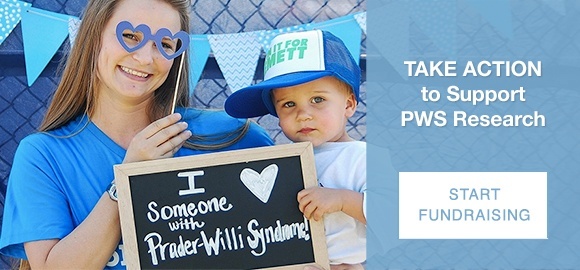70% of cases of Prader-Willi syndrome are associated with a “deletion” of 5,000–6,000 missing base pairs (bp) of DNA on the paternally inherited copy of chromosome 15. What are the biological consequences of the larger 6,000-bp deletion (typically called “Type 1” or T1 in the context of PWS) versus the smaller 5,000-bp (“Type 2” or T2) deletion? We know that individuals with T1 deletions are missing four additional genes compared to those with T2, but the roles of the four genes in this region underlying neurodevelopment have been largely unexplored until recently.
Clinically, individuals with T1 (larger) deletions tend to have more significant physiological and cognitive symptoms than those with T2 deletions, although there is considerable overlap between the groups. Researchers at Amsterdam University Medical Center have now published new findings suggesting these genes’ activity in microglia (the immune cells of the brain) may explain the effects on clinical symptoms and present opportunities for new therapies for individuals with the T1 deletion.
Beginning with postmortem brain tissues representing several T1 and T2 patients, the researchers looked for differences in the key details that are associated with PWS symptoms. Previous studies have highlighted the importance of microglia (which are responsible for waste removal and mediating inflammatory responses) in the PWS hypothalamus (a brain region involved in metabolism and behavior), but only now are researchers beginning to note specific differences in these cells in T1 vs. T2 individuals. Two of the genes missing in T1 but not T2 patients are CYFIP1 and TUBGCP5, which are both involved in maintaining the cytoskeleton, a network of proteins that gives cells their shape and serves as tracks for the transport of materials within cells. As expected, the microglia of T1 patients exhibit abnormal shapes and are even more severely affected than control cells lacking only the CYFIP1 gene. Furthermore, while T2 samples actually have more microglia than neurotypical control brains (likely responding to proinflammatory signals arising from the effects of other deleted PWS genes), T1 samples have fewer (likely due to poor survival of microglia with compromised cytoskeletons). Microglia also play a role in the formation of synapses, sites of cell-to-cell communication enriched in proteins specialized in sending or receiving chemical signals; indeed, T1 brains have a significantly reduced density of synapses.
The cytoskeleton is also closely tied to microglia’s role as immune cells; these cells must be able to “eat” (cell biologists say “phagocytose”) and digest unwelcome particles (infectious microbes as well as normal native wastes) encountered in their environment. Both phagocytosis and debris degradation were found to be significantly altered in only T1 and not T2 microglia. In response to this increased debris accumulation due to failed clearance by microglia, T1 brains show an increased amount of a different cell type, astroglia, arising as an alternative cleaning mechanism.
In addition to compromised microglial activity, CYFIP1 has also been associated with white matter myelination. White matter is a term for brain tissue that mediates communication across different brain regions, and it must be highly insulated (with a material called myelin) due to the relatively long distance across which electrical impulses need to be transmitted. As predicted, significantly less myelin was found in T1 brains as compared to T2 and neurotypical samples.
This work represents a significant step in addressing the symptomatic diversity across the vast PWS genetic landscape. It highlights the importance of careful genetic analysis for each patient, as T1 patients may experience additional challenges as compared to T2 patients. While neuroinflammation may be a symptom in all PWS cases, there may be a need for different approaches to targeting it for T1 and T2 patients. As well, the different deletion subtypes may respond differently to the same therapy. Research like this, contributing to the precise definition of mechanisms associated with subtle genotypic differences among PWS patients, is only possible thanks to the generous donation of brains and other specimens representing the full variety of PWS genotypes.







